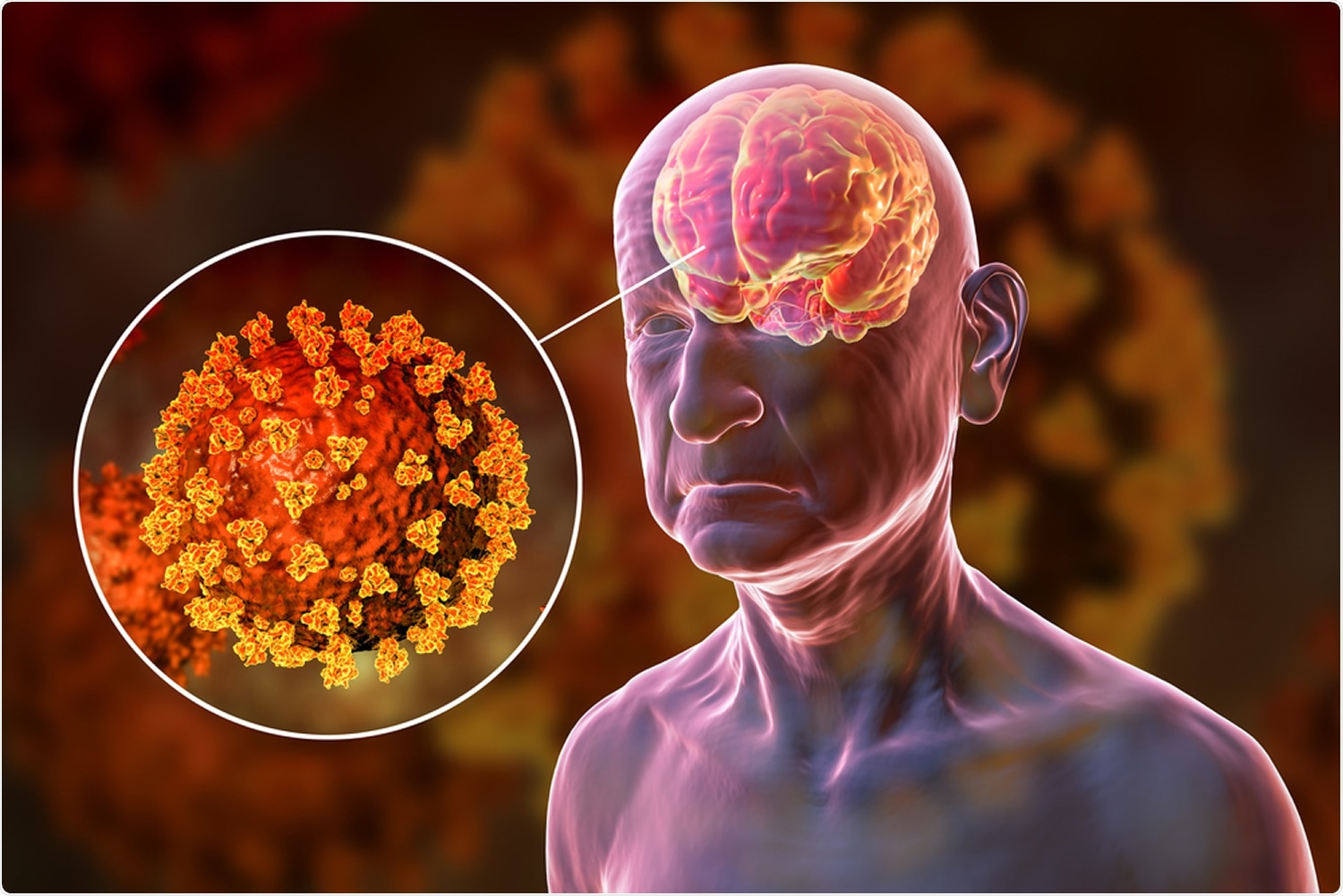What is the relationship between COVID-19 and the brain? A new review published in Tropical Biomedicine summarizes the key findings on how severe acute respiratory syndrome coronavirus 2 (SARS-CoV-2) causes severe COVID-19 infection, disrupts brain activity and produces a range of long-term neurological disorders.

Overall, studies have confirmed that SARS-CoV-2 can infect the brain directly and indirectly. Infections can vary from mild to severe with several neurological disorders, including hypoxia, anosmia, dysgeusia, meningitis, encephalitis, and seizures. Patients with severe COVID-19 infection are at a higher risk of having long-term neurological complications with no effective treatment currently available.
“With the growing clinical evidence that the neurological implications shown by SARS-CoV-2 infected patients might not be chance, medical practitioners are urged to be more diligent in realizing the first signs of neurological symptoms which may be strong indications of the severity of the infection,” conclude the research team.
ACE2’s role in SARS-CoV-2 neural invasion
The angiotensin-converting enzyme 2 (ACE2) is a critical player in allowing SARS-CoV-2 to enter the brain. The SARS-CoV-2 spike protein binds to the ACE2 receptors on host cells.
SARS-CoV-2 binding to ACE2 obstructs ACE2’s facilitation of converting angiotensin II to angiotensin. If left unconverted, an accumulation of angiotensin II can increase oxidative processes that create brain degeneration.
ACE2 is found in many cells beyond the lungs. For example, they have been detected in cells in the nasal cavity and nasopharynx, glial cells, and neurons in the brain stem — an area that controls cardiovascular and respiratory function.
Pathophysiology on how SARS-CoV-2 penetrates the brain
Direct entry to the brain is likely due to axonal transport through the neurogenic route. SARS-CoV-2 could enter through specific peripheral nerves, such as olfactory nerve fibers, as people infected with COVID-19 tend to report loss of smell or taste.
Several studies suggest the brainstem may be the destination after traveling from the nasal cavity. For example, SARS-CoV-2 was found to be highly prevalent in this area. Additionally, the vagus nerves may serve as a route of entry since they contain nerve fibers that innervate parts of the nasal cavity and part of the trachea and lungs.
“Since the sense of taste is a coupled interaction between the olfactory and trigeminal systems, this pathway of SARS-CoV-2 transmission could be a contributing factor to the high number of COVID-19 patients presenting with symptoms of anosmia and dysgeusia,” explained the researchers.
An alternative way is through a hematogenous route through the blood-brain barrier. Other coronaviruses such as murine hepatitis virus have also used this route to enter the brain.
By infecting the endothelial cells or other peripheral blood cells lining up the blood-brain barrier, SARS-CoV-2 may likely pass through and transmigrate to the brain through the bloodstream. If so, this could explain neurovascular damage in patients with COVID-19.
Indirect viral entry to the brain
SARS-CoV-2, like any virus, stimulates the immune system to respond and defend the body. But the immune system acts as a double-edged sword as prolonged immune activation can give rise to cytokine storms that damage nearby cells and structures such as the blood-brain barrier.
Inflammation within the body runs the risk of organ failure and death in the most severe cases. In the brain, COVID-19 induced inflammation has increased reports of symptoms akin to Guillain-Barré Syndrome — an autoimmune disorder that attacks healthy nerve cells.
Another indirect method is lowering oxygen supply to the brain via hypoxia. COVID-19 infection may cause the lungs to fail and increase the risk of respiratory distress.
Neurological manifestations from COVID-19 infection
One of the most commonly reported neurological complications is a loss of taste and smell. Yet more severe complications may arise including, meningitis, encephalitis, myelitis, seizure, and ischemic stroke.
While it’s still too early to fully understand the long-term effects of COVID-19 infection, previous studies on SARS and MERS can help predict the likelihood of persistent neurological complications. For example, patients infected with one of these coronaviruses developed obsessive-compulsive disorder, depression, panic disorders, and more.
There also poses a risk of neurocognitive issues from demyelinating disorders similar to multiple sclerosis. Cytokine storms from an overactive immune system can increase the risk of stroke, which may cause impairments in memory, attention, and speed in processing information.
Post-COVID-19 Neurological Syndrome (PCNS) is the result of long-term consequences of SARS-CoV-2 on the brain. Current research has found accumulating pro-inflammatory agents such as IFN-γ, IL-7, and other cytokines that may cause post-stroke depression. Other PCNS symptoms may include chronic fatigue, depression, apathy, and cognitive problems.
The researchers suggest PCNS will likely affect younger rather than older adults, indicating a potentially massive health problem in the future.
- Yew MMT, et al. (2021). COVID-19 and its effects on neurological functions. Tropical Biomedicine. Doi: https://doi.org/10.47665/tb.38.3.086, https://msptm.org/files/Vol38No3/tb-38-3-086-Yew-M-M-T.pdf
Posted in: Men's Health News | Medical Research News | Medical Condition News | Women's Health News | Disease/Infection News
Tags: ACE2, Angiotensin, Angiotensin-Converting Enzyme 2, Anosmia, Biomedicine, Blood, Brain, Chronic, Coronavirus, Coronavirus Disease COVID-19, Cytokine, Cytokines, Depression, Dysgeusia, Encephalitis, Enzyme, Fatigue, Guillain-Barré Syndrome, Hepatitis, Hypoxia, Immune System, Inflammation, Ischemic Stroke, Lungs, Meningitis, Multiple Sclerosis, Myelitis, Nerve, Neurons, Oxygen, Pathophysiology, Protein, Research, Respiratory, SARS, SARS-CoV-2, Sclerosis, Seizure, Severe Acute Respiratory, Severe Acute Respiratory Syndrome, Spike Protein, Stroke, Syndrome, Virus

Written by
Jocelyn Solis-Moreira
Jocelyn Solis-Moreira graduated with a Bachelor's in Integrative Neuroscience, where she then pursued graduate research looking at the long-term effects of adolescent binge drinking on the brain's neurochemistry in adulthood.
Source: Read Full Article